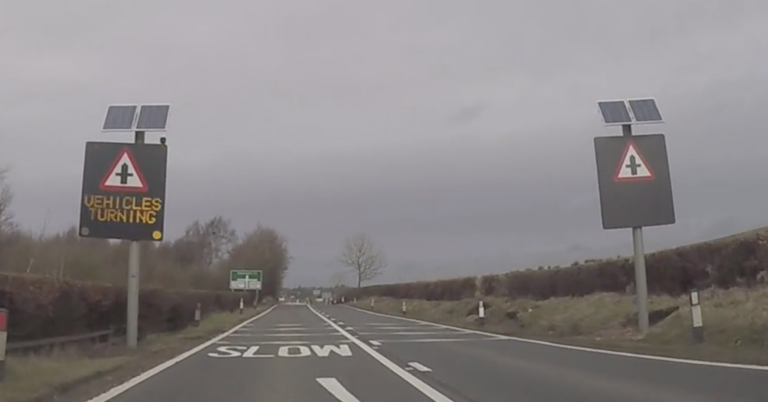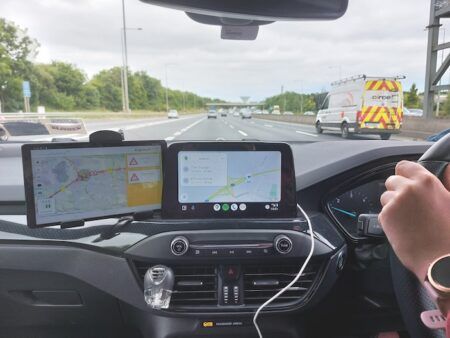The more we do something, the more experienced we are considered to be. If that’s true for driving, it would mean experienced drivers are the safest road users around. But what if experience doesn’t equal the best driving? What if it can mean a growing complacency?
Driving the normal route to work, to the shops or home, could it sometimes mean taking your surroundings for granted? Could remaining alert and attentive, even on the usual routes taken regularly, go out of the window?
Could the everyday routine, combined with tiredness or distractions, such as children, mobile phones and music, leading to sensory deprivation, mean that the driver’s attention isn’t fully focussed on what it should be – the safe driving of a fast-moving vehicle?
Inattentional blindness
The term ‘inattentional blindness’ was created after a study found how easy it is for people to miss the most obvious objects in front of them. Such a psychological lack of attention is not narrowed down to one section of individuals, but a common trait amongst us all. When distracted, as any great magician will tell you, we miss what is right in front of our noses.
inattentional blindness has proven that when a person is so focussed on one thing, they are more likely to miss the obvious around them as was witnessed in one of the first studies on the phenomenon. Participants watched a video of people passing a basketball and were asked to count the passes. No-one noticed the person dressed up as a gorilla in the middle of it all. Everyone’s focus, instead, was on the counting task.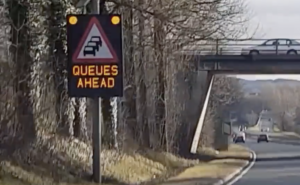
Stating the obvious
Mobile phone use in cars is one of the top distractions when it comes to inattentional blindness, an issue that governments around the world have been consistently trying to crack down on.
Naturally informing drivers of the dangers of phone usage while driving, or eating, dealing with children and not being over-tired, are all initiatives that governments have championed on roads for years.
With it already proven that our brains can only process so much information at any given time, it becomes imperative to minimise anything extra that could affect much-needed attention on the road.
Inattentional blindness isn’t limited to a certain group however. All drivers have at some point had to brake or swerve suddenly, after failing to notice something right in front of them, or almost running a red light.
A study in illumination
Illuminated signs along the road that help to warn or educate drivers of the road ahead have been proven to help drivers pay attention to the road and increase their observation, as a study by the IMOB Transportation Research Institute in Belgium found.
Too many signs and line markings have also been noted to be more harmful and distract the driver even further as a study by The Road Safety Observatory highlights. In this study, conversely, the use of vehicle activated signs (VAS) were proven to be more effective in making driver’s aware of the road and what lies ahead, rather than cluttered and poorly designed stationary signs, that drivers tend to ignore.
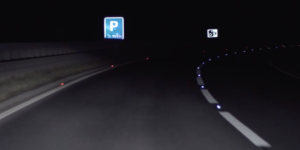 The Road Safety Observatory study on road markings further highlights the issue with non-adaptive signs.
The Road Safety Observatory study on road markings further highlights the issue with non-adaptive signs.
In the study, it showed that VAS have been successfully used in making drivers aware of their speed or of a possible hazard. It outlines how trials of VAS, to manage speeds, for the UK’s Department for Transport, has seen speeds reduce by up to 14 mph on some rural roads, and at bends or junctions reduce speeds by up to 7 mph.
The solution is already out there
Quality and relevance seem to be key components to achieve driver observation in this day and age. Clearview Intelligence has witnessed this first-hand with the installation of our road safety solutions that include VAS on many dangerous roads and in many varied applications around the UK.
In Fairlie, North Ayrshire, Clearview installed a speed warning solution due to the consistent speeding that was occurring along a built-up rural area, resulting in an HGV crashing into a residential property and sadly killing the property owner. Transport for Scotland tried numerous traffic calming solutions and approached Clearview to see if we could reduce speeds further.
Together, Transport for Scotland and Clearview, created an innovative scheme, the first of its kind in the UK, which saw the use of existing traffic signals in the centre of the village used to help slow down drivers. Clearview technology detected drivers who were still driving over the 30mph speed limit as they entered the village and warned them using VAS signs as well as triggering a red phase at the signalised junction. This helped to change the manner in which drivers drove through the village, who were ignoring other signs and paying attention only to what they considered was relevant to them.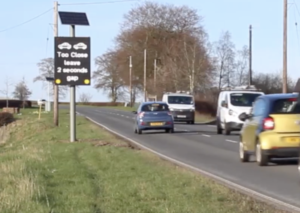
VAS applications, when combined with vehicle detection expertise, have also been used by Clearview to warn drivers that they are exceeding the two-second gap rule between vehicles, when they are going the wrong way up a road with the wrong way slip warning, along with approaching hidden junctions and cars waiting to come out of them. Watch the video below demonstrating all of these dynamic VAS warnings in action.
The advantage of VAS is their adaptive nature and how they can be used on any road for any given situation, such as a sudden change in weather, or to alert drivers that they are on a road that motorbikes travel on regularly, that there is a sharp sudden bend with awaiting traffic, queues ahead, a traffic incident…the applications are endless, and yet highly effective.
Because the sign is not a constant feature and is only activated on a certain condition then it means the driver is much more likely to notice the message or warning when it is triggered on the screen in front of them.
VAS can achieve simple, but highly effective and possibly life-saving adaptive warnings, that are much less likely to be ignored.


